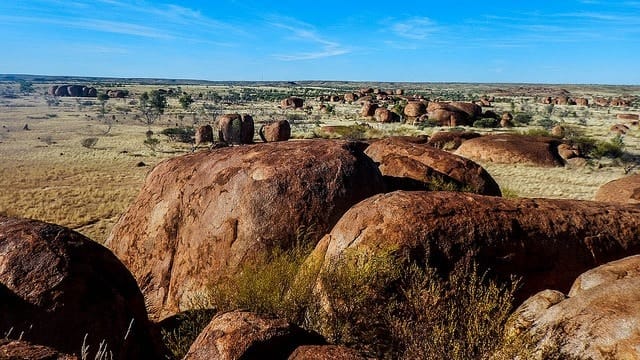Australia, a country with a rich, versatile and blossoming natural life. A country with amazing food, amazing people, and an amazing history. A trip to Australia can feel a little discombobulating in the first few moments if making the trip from a Western climate to here, as of course the seasons will be completely flipped on their head. However, the moment you exit the airport you’ll be greeted with the beautiful expanse of this wonderful country, and all it has to offer.
However, of course countries are known for many things, but it does feel like Australia is sometimes stereotyped a little too much. While beaches, great foods, crazy wildlife and hats with corks are to be found, as are plenty ‘g’day mates’ and kangaroos, that is only 0.01% of what this country has to offer. In the interest of finding you some wonderful uncommon experiences to see the hidden side of Australia, we have compiled a list of four uncommon sights you should find it more than worthwhile to visit.
Nambung Desert
The Western Australian Nambung desert is around ninety minutes north of Perth. You can get there even more quickly with a good car hire. Of course, you might be thinking ‘what does a desert have to offer me?’ Well, nestled there are The Pinnacles, one of the most interest natural limestone developments to be found. Jutting out from the surface and spread along around a mile of land, this area almost seems like a natural form of ruins.
There is a storied history here. The aboriginals suggest that these limestone rocks are natural memorials to those who died in the quicksand. Of course, any and all residual quicksand is heavily cordoned off and maintained, so there’s no need to be afraid of this area. However, it can certainly make for an interesting trip, as this is the one and unique place you will ever see a site such as this. Be sure to bring your camera, especially if you’re interested in photographing strange shadows and compositions of nature!
Karlu Karlu

Karlu Karlu are also known as ‘The Devil’s Marbles,’ and for quite a funny reason. These two massive granite rocks standing parallel to one another on rock platforms. This area is a protected conservation reserve, due to them being a strong and spiritually significant area for the aboriginals. This means that it is known as one of the oldest religious sites in the world. Karlu Karlu roughly translates to round boulders, which lends credence and respect to the sight.
You can get here at the exact midway point between Tennant Creek (North) and the Alice Springs (South.) Of course, like any protected conservation effort, you can learn the history here, enjoy a guided tour and relax in the nearby facilities. However, if you’re into your natural history, the age and breadth of this site should give you some genuine pause for thought and wonder.
Wolfe Creek Crater
If you like your odd space history, where else is better to go than a meteoric impact? That is until Elon Musk allows us all to travel to Mars. However, the weather is much more pleasant in Australia, so this will more than serve for now. The Wolfe Creek Crater is located in the Western Australian outback and is of course the filming location of the popular horror series ‘Wolf Creek’. Luckily in real life the tragedies to be experienced here are zero, only a natural wonder and interest that something so small could produce a crater so large. Be sure to bring your hiking boots, and only stick to the predestined path if traversing this rocky landscape.
Nimbin
If you have a little hippie in you, then it might do you well to visit Nimbin, one of the very first hippie communities to ever grace Australia. Luckily this place is still thriving today, with plenty of community-led stores, events, art displays and musical gigs for you to explore. Nimbin is very popular with tourists, and the self-sufficient community hosts festivals for them to attend every year. This can be quite a tiring place to visit, as almost everyone has profound energy for celebration all the time. However, if you’re looking to blow off some steam with people you’ll think you’ve known forever, then relaxing and enjoying this community can be one of the best things you’ll do on your Australian travels.
So what are you waiting for? A world of incredible Australian adventure lies just around the corner. Be sure to experience the most you can within the time allotted, and you’re sure to have one of the best vacations of your life.
